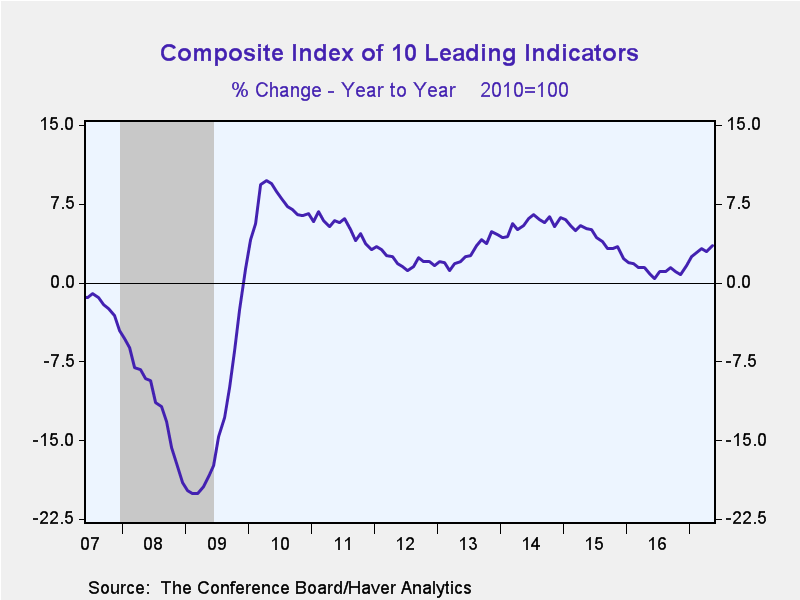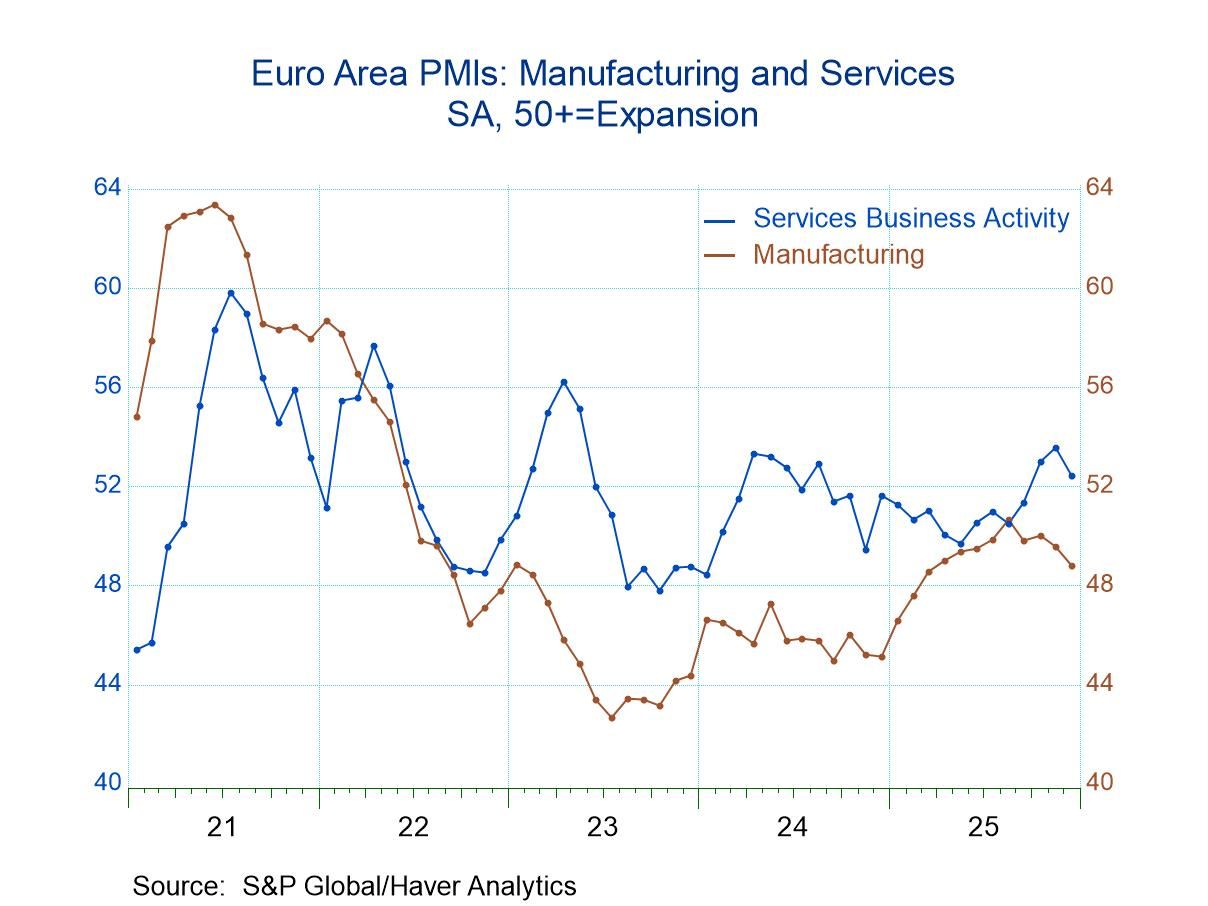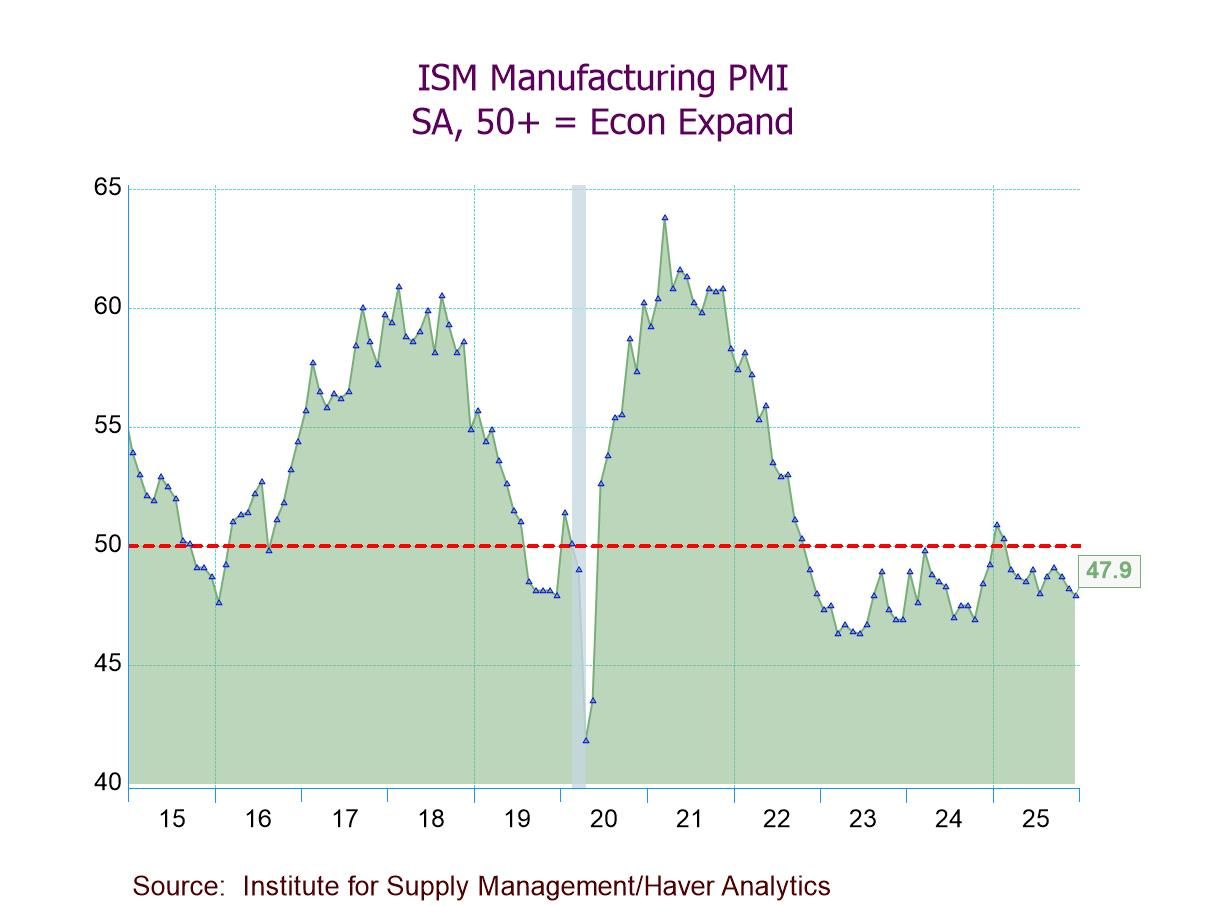 Global| Jun 22 2017
Global| Jun 22 2017U.S. Leading Economic Indicators Strengthen
by:Tom Moeller
|in:Economy in Brief
Summary
The Conference Board's Composite Index of Leading Economic Indicators increased 0.3% (3.5% y/y) during May following a 0.2% April gain, revised from 0.3%. A 0.3% rise had been expected in the Action Economics Forecast Survey. Three- [...]
The Conference Board's Composite Index of Leading Economic Indicators increased 0.3% (3.5% y/y) during May following a 0.2% April gain, revised from 0.3%. A 0.3% rise had been expected in the Action Economics Forecast Survey. Three-month growth eased to 3.5% (AR) from its peak of 5.9% in February.
Most of the component series contributed to the index rise. A steeper interest rate yield curve, a higher ISM new orders index and improved consumer expectations for business/economic conditions had the largest positive effects. The leading credit index and stock prices increased, while consumer goods and nondefense capital goods bookings also gained. Building permits fell for the second straight month.
The Index of Coincident Economic Indicators ticked 0.1% higher during May after an unrevised 0.3% April gain. The latest rise left the three-month growth rate at 2.1% (AR), up from 1.5% during Q1. Payroll employment, real personal income less transfers and manufacturing & trade sales contributed positively to the index. Industrial production held steady following an April jump.
The Index of Lagging Economic Indicators also nudged 0.1% higher following a 0.3% rise. Three-month growth of 2.3% was down from a 3.7% gain in 2015. More C&I loans and a higher consumer installment credit/personal income ratio were offset last month by slower growth in the services CPI and the average duration of unemployment.
The ratio of coincident-to-lagging indicators also is a leading indicator of economic activity. It measures excesses in the economy relative to its ongoing performance. This ratio held steady and has been moving sideways since early last year.
The Conference Board figures are available in Haver's BCI database; the components are available there, and most are also in USECON. The expectations are in the AS1REPNA database. Visit the Conference Board's site for coverage of leading indicator series from around the world.
| Business Cycle Indicators (%) | May | Apr | Mar | May Y/Y | 2016 | 2015 | 2014 |
|---|---|---|---|---|---|---|---|
| Leading | 0.3 | 0.2 | 0.4 | 3.5 | 1.2 | 4.4 | 5.6 |
| Coincident | 0.1 | 0.3 | 0.1 | 2.1 | 1.6 | 2.3 | 2.5 |
| Lagging | 0.1 | 0.3 | 0.2 | 2.1 | 3.4 | 3.7 | 3.6 |
Tom Moeller
AuthorMore in Author Profile »Prior to joining Haver Analytics in 2000, Mr. Moeller worked as the Economist at Chancellor Capital Management from 1985 to 1999. There, he developed comprehensive economic forecasts and interpreted economic data for equity and fixed income portfolio managers. Also at Chancellor, Mr. Moeller worked as an equity analyst and was responsible for researching and rating companies in the economically sensitive automobile and housing industries for investment in Chancellor’s equity portfolio. Prior to joining Chancellor, Mr. Moeller was an Economist at Citibank from 1979 to 1984. He also analyzed pricing behavior in the metals industry for the Council on Wage and Price Stability in Washington, D.C. In 1999, Mr. Moeller received the award for most accurate forecast from the Forecasters' Club of New York. From 1990 to 1992 he was President of the New York Association for Business Economists. Mr. Moeller earned an M.B.A. in Finance from Fordham University, where he graduated in 1987. He holds a Bachelor of Arts in Economics from George Washington University.










